Invented by Larry Green, Hiroaki Shizuya, Ablexis LLC
Non-human mammals, such as mice, rats, and rabbits, are commonly used in the production of chimeric antibodies. These animals are genetically engineered to produce humanized antibodies, which are then harvested and purified for use in various applications. The demand for chimeric antibodies has increased significantly in recent years, as they have shown great promise in the treatment of a variety of diseases, including cancer, autoimmune disorders, and infectious diseases.
One of the main drivers of the market for non-human mammals in the production of chimeric antibodies is the growing prevalence of chronic diseases. As the population ages and lifestyles become more sedentary, the incidence of chronic diseases such as cancer and diabetes is on the rise. Chimeric antibodies offer a promising new approach to treating these diseases, as they can be designed to target specific cells or molecules that are involved in disease progression.
Another factor driving the market for non-human mammals in the production of chimeric antibodies is the increasing demand for personalized medicine. Chimeric antibodies can be tailored to the specific needs of individual patients, allowing for more targeted and effective treatments. This personalized approach is particularly important in the treatment of cancer, where traditional chemotherapy and radiation treatments can have significant side effects and limited efficacy.
Despite the promising potential of chimeric antibodies, there are some challenges associated with their production. One of the main challenges is the high cost of production, which is largely due to the use of non-human mammals in the process. In addition, there are ethical concerns surrounding the use of animals in research and development.
To address these challenges, researchers are exploring alternative methods for the production of chimeric antibodies, such as the use of plant-based systems or in vitro cell culture techniques. These approaches have the potential to reduce the cost and ethical concerns associated with the use of non-human mammals.
In conclusion, the market for non-human mammals in the production of chimeric antibodies is a rapidly growing industry that is driven by the increasing demand for personalized medicine and the growing prevalence of chronic diseases. While there are challenges associated with the use of animals in research and development, researchers are exploring alternative methods to address these concerns. As the field of chimeric antibodies continues to evolve, it is likely that we will see continued growth and innovation in this exciting area of medicine.
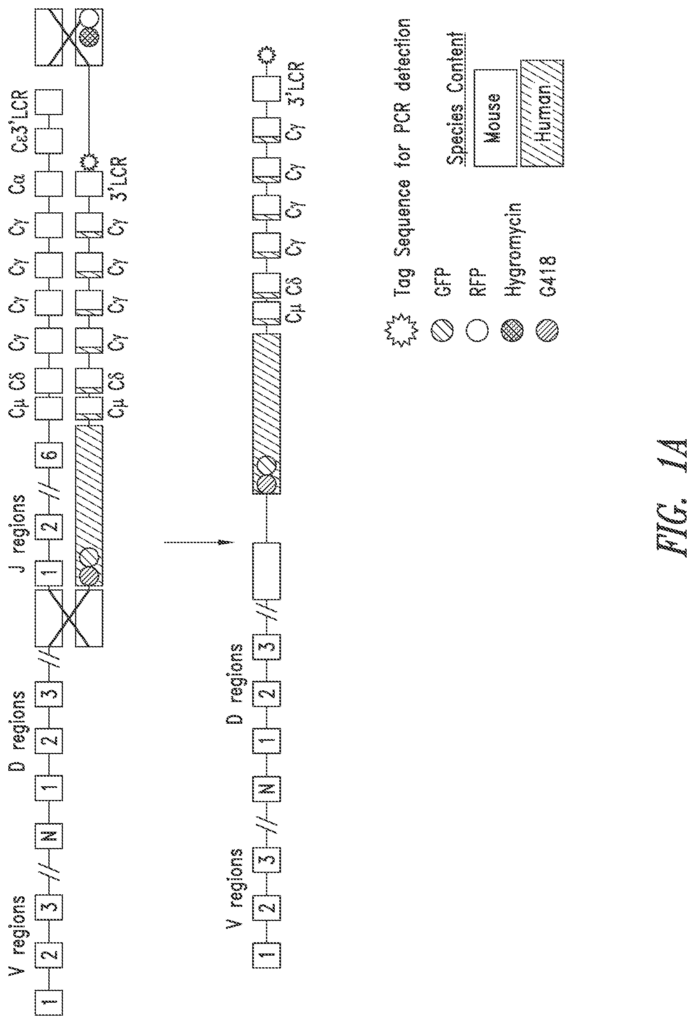
The Ablexis LLC invention works as follows
The invention provides non-human knock-in cells, and mammal cells with a genome that encodes chimeric antibody and methods for producing knock-in mammals and cells. Among the aspects of this invention are chimeric and humanized antibodies as well as pharmaceutical compositions, kits, and kits. Certain aspects of this invention relate also to the diagnostic and treatment methods that use the antibodies of invention.
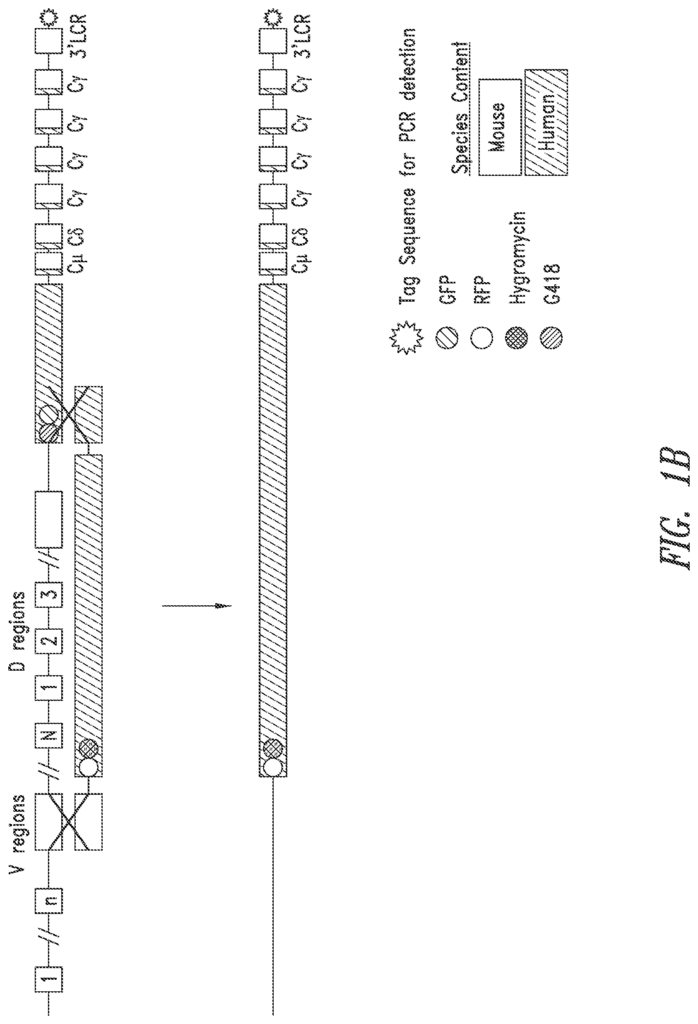
Background for Non-human mammal for the production chimeric antibodies
Technical Field
The present invention is directed to the general production of knock-in nonhuman mammals and cells, chimeric antibodies and immunoglobulin chains.
Description of Related Art
Monoclonal antibodies (mAbs), which are used in disease therapies, have revolutionized medicine. mAb-based drugs can now be used to treat cancer, autoimmunity and inflammation, macular degeneration, and other conditions. The technologies available for the generation and discovery mAbs to treat diseases and disorders have many limitations. They are inefficient, lack or loss in sufficient potency, loss or absence of specificity, and induction of an immune reaction against the therapeutic mAb. First attempts at using mAbs for therapeutic purposes were hampered by the immunogenicity and composition of the mAbs. The mouse amino acid sequence caused severe allergic reactions in humans and reduced the drug’s pharmacokinetics and potency.
Alternative methods for generating mAb therapeutics are chimerized antibodies (cmAbs), which are created using recombinant-DNA technology, combining a variable domain derived from mice with a constant region derived from humans. Humanizing mAbs is another method of producing antibodies. This involves humanizing the mAbs to reduce the amount mouse amino acids in therapeutic mAbs. Technologies for generating ‘fully-human’ antibodies have been developed. In vitro antibodies have not yet been able to accurately mimic the natural maturation of antibodies that occurs in an in vivo response. 1122-23, Lonberg, Nat. Biotech. (2005) 23:1117-1125.) These methods are time-consuming, expensive and can result in mAbs that are less effective or even life-threatening. Also, the molecular process inherent to these methods can result in epitope shift and loss of affinity, which can reduce potency and introduce undesirable changes in specificity.
Transgenic mice are engineered to produce human antibodies. This is done by replacing mouse Ig loci with human antibody transgenes. Many of these transgenic mice models are missing important components for the antibody development process. These include sufficient diversity in genes from which variable regions in antibodies are produced, the ability to produce IgD (Loset and al., Journal of Immunology, 2004:2925-2934), or a fully functional 3? Immunol. (2004) 172:2925 – 2934, important cis regulatory components important for class switching recombination(CSR), or fully functional 3? The locus control regions (LCRs) (e.g. U.S. No. No. 7,049 426; and Pan et al. J. Immunol. (2000) 30:1019-1029). Transgenes are integrated into some transgenic mice that contain human miniloci or yeast artificial chromosomes. Other transchromosomes exhibit different frequencies of mitotic or meiotic instabilities. The fully human constant region of these transgenic mouse strains also function less optimally due to reduced activity of other components of the BCR transduction apparatus (e.g. Ig? Ig? and FcR, as compared with normal mice.
The U.S. Patent No. Nos. Patent Nos. 2007/0061900). These mice have human V regions that can be extracted and added to the constant region gene of humans by molecular biology methods. The recombinant method is then used to express fully-human antibodies. These mice’s antibodies may show a reduction in activity, potency or solubility. When the human V domain is separated from the context in which it evolved with the mouse C domains, and then added to a human-specific C region to create a fully human antibodies.
Current methods of developing therapeutic mAbs can alter the functions of an antibody, including solubility and potency, as well as antigen specificity. These were selected during initial stages of development. The mAbs produced by the current methods can also elicit an immune response that is dangerous. Current human and chimeric antibodies producing mice do not have the genetic content necessary to function correctly, such as genetic diversity, cis-acting regulatory elements, trans-acting regulatory elements signaling domains or genetic stability. It would be advantageous to develop compositions and methods for the enhanced discovery and generation of therapeutic antibodies, which retain potency and specificity throughout the antibody discovery, development and production process, without eliciting immune responses, as well methods of producing these antibodies. “The present invention offers a solution to generating these antibodies in transgenic mice.
The present invention is a set of kits that includes knock-in nonhuman mammals, cells and antibodies. It also contains compositions, including pharmaceutical compositions, as well as methods. The present invention is more specifically a set of compositions, kits and methods relating to the chimeric Ig chain and antibodies produced by knock-in nonhuman mammals and cell and the human antibodies engineered using the variable domains from said chimeric antibody.
The invention relates to a non-human mammalian homologous recombination capable cell that has a genome including (1) a human VH segment, and (2) a portion from a syngeneic Ig Heavy Chain locus, comprising all or part of gene segments downstream of JH, wherein a human CH1 is substituted for a syngeneic domain, and wherein both the human VH segment and the syngeneic Ig Heavy chain locus are used in In some embodiments, this portion also includes a 3? In certain embodiments, the portion further comprises a locus control region or functional fragment thereof. In one embodiment, a human DH segment is also included in the cell. In another embodiment, a DH segment of a mammal is added to the cell. In a specific embodiment, the DH segment is chosen from the group of rabbit, sheep rat hamster mouse, non-human primates, human and non-human primate. In certain embodiments, the DH segment is human. In another embodiment, in the human CH1 region, there is a single CH segment (e.g. C?1, C??2, C??4, etc.).
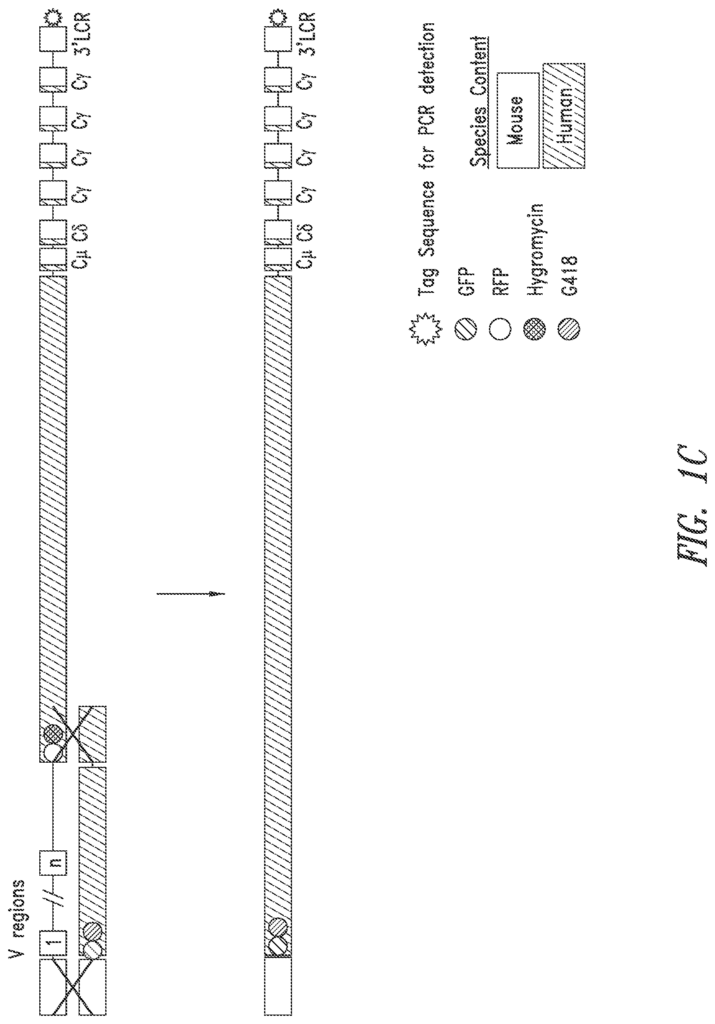
In a further embodiment, the cell comprises a human upper-hinged gene segment. In an embodiment that is related, the cell also comprises a middle hinge gene segment. In some embodiments, the IgG4 gene segment of the human hinge segment is used. In some embodiments serine replaces the proline in position 229 The chimeric Ig heavy chains are capable of binding endogenous FcR in certain preferred embodiments.
In certain embodiments the cell is an embryonic cell stem cell. In another embodiment, the mouse cell is used.
The invention also relates to the production of a cell that contains a genome that encodes a chimeric Ig Heavy Chain. This method includes the following steps: producing a first, BAC that comprises the human VH gene; producing a, second, BAC that comprises all or part of a syngeneic Ig Heavy chain locus, comprising all of or a subset of the downstream gene segments of JH; and, introducing the, first, BAC in a homologous In one embodiment, the first or second BCA further includes a JH gene segment.
In particular embodiments, a first BAC also contains a site-specific recombinase sequence near the 3? “In particular embodiments, the first BAC further comprises a first site-specific recombinase sequence near the 3? The second BAC further comprises a second site-specific recombinase recognition sequence near the 5? In a related embodiment, the expression of a site-specific enzyme is also included. An intervening sequence that exists between the first site-specific recognition sequence and the second site-specific recognition sequence is removed. In one embodiment, both the first and second site specific recombinase sequences are loxP, or variants thereof. The site-specific enzyme is CRE. In another embodiment the first and second site specific recombinase sequences are frt and the site-specific enzyme is flp.
In certain embodiments of a method of producing the cell in accordance with the invention, the introduction step of the second BCA occurs before the introduction step of the first BCA.
The invention relates to a non-human mammalian homologous recombination capable cell that has a genome including a human Ig locus or a part thereof. This human Ig locus can replace all or part of an endogenous Ig locus so that the genome encodes a human Ig or a fraction thereof. In one embodiment, a human Ig light-chain locus is included in the human Ig chain locus. Variable region. In a similar embodiment, the Ig locus light chain further comprises a Human Ig? constant region.
In a further embodiment, a human Ig light-chain locus may comprise all or part of an Ig. The light chain locus comprises both an Ig? 3?LCR or a functional fraction thereof. In one embodiment, human Ig? In one embodiment, the human Ig? locus. The human Ig? light chain locus comprises human V? The light chain locus consists of human V? Gene segments J?-C? In another embodiment, the human C? The human Ig? light chain locus comprises human V? The light chain locus consists of 1 to 7 segments of human J? One to seven human J? The human gene segments are arranged in a similar way to the Ig? Locus configuration. Ig? 3? LCR or a functional portion thereof is from one of the mammal species selected from human, nonhuman primate and rat. In one embodiment, the Ig? 3? LCR or a functional part thereof is human. In certain embodiments, Ig? 3? LCR or a functional portion thereof binds NFb. In one embodiment, Ig? 3? LCR or a functional fraction thereof is from mouse, and has been mutagenized to restore the binding of NF-b. In other embodiments the 3? In other embodiments, the 3? What is an Ig locus? 3? LCR or functional fragment thereof
In certain embodiments the cell is an embryonic cell stem cell. In another embodiment, the mouse cell is used.
Another aspect relates to the method of producing the above described cell that contains a genome that encodes a human Ig, or part thereof. The steps include producing a first Bac comprising a locus of a human Ig, or part thereof; introducing this first BAC into an homologous-recombination-competent nonhuman mammalian cells; and replacing the endogenous Ig, or portion thereof, through homologous replacement.
In certain embodiments, the Ig light-chain locus of a human comprises an Ig? Variable region. Another embodiment includes the steps of generating a second BAC containing a human Ig. A related embodiment further comprises the steps of producing a second BAC comprising a human Ig? constant region.
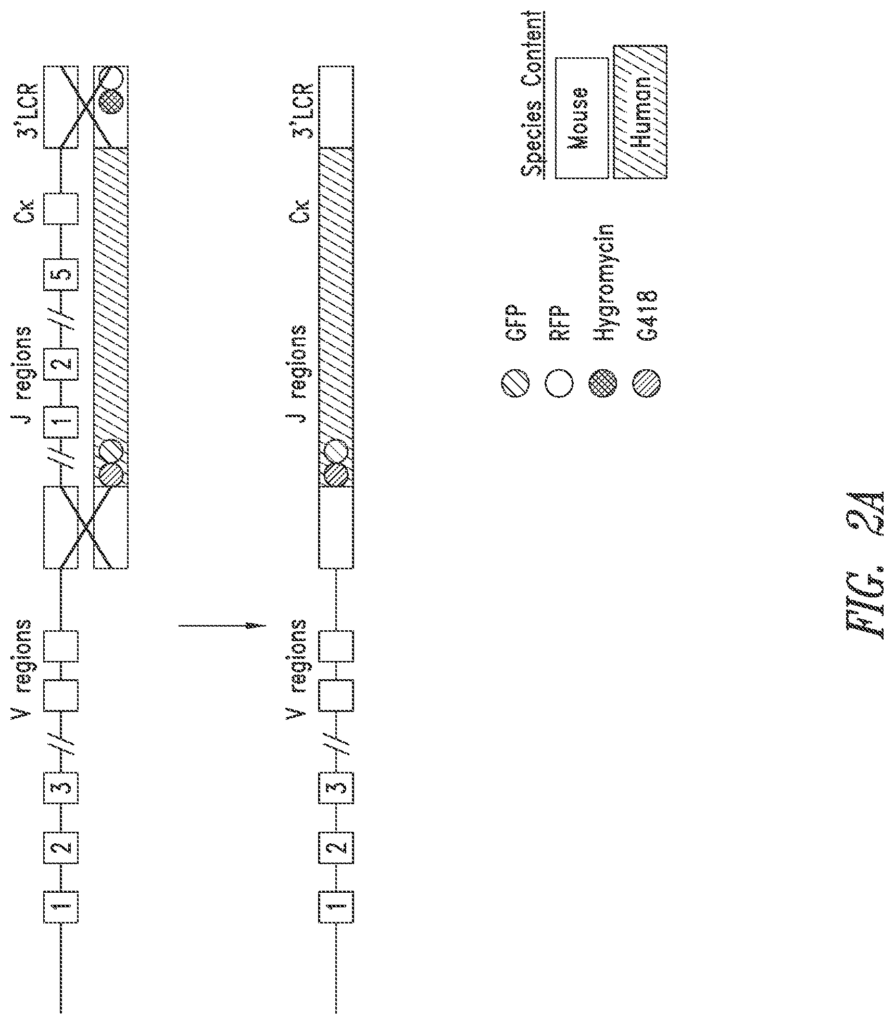
In yet another embodiment, the second BAC comprises a second site-specific recombinase sequence near the 5? “In yet another embodiment, the first BAC further comprises a first site-specific recombinase sequence near the 3? In a related embodiment, the method further comprises the step of expressing a site-specific recombinase. In another embodiment, the method includes the step of expressing site-specific enzyme, in which the intervening sequences between the first site-specific recognition sequence and the second site-specific recognition sequence are removed. In one embodiment, both the first and second site specific recombinase sequences are loxP, or variants thereof. The site-specific enzyme is CRE. In another embodiment the first and second site specific recombinase sequences are frt and the site-specific enzyme is flp.
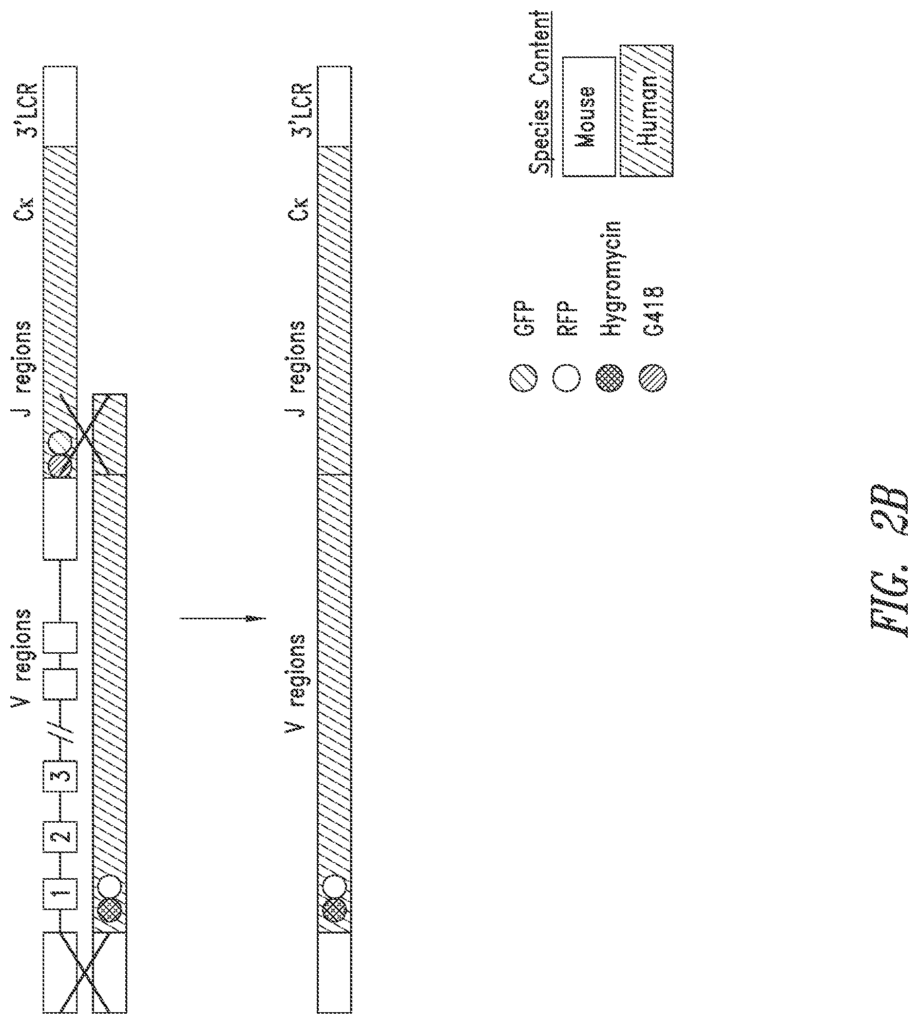
Click here to view the patent on Google Patents.
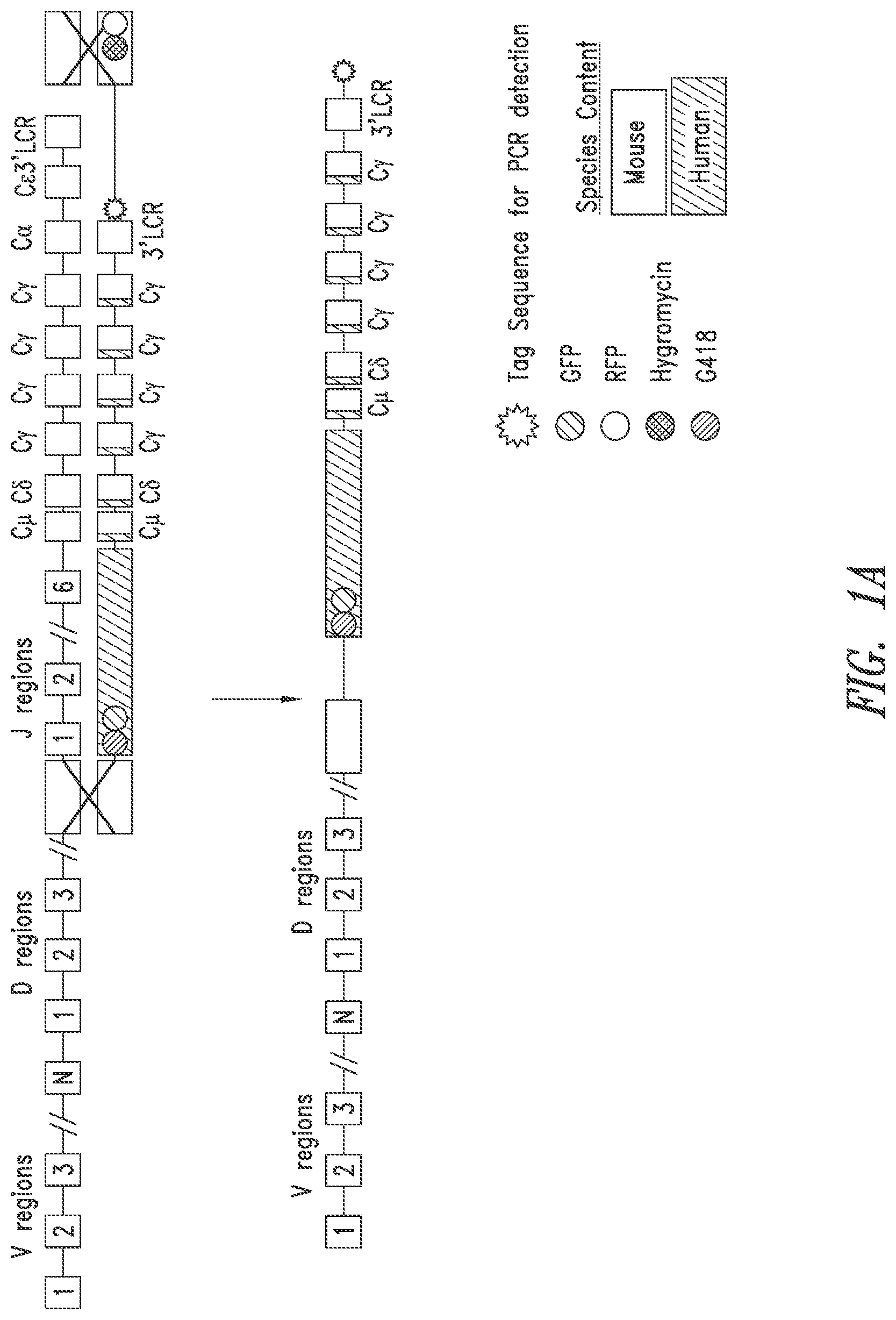
Leave a Reply